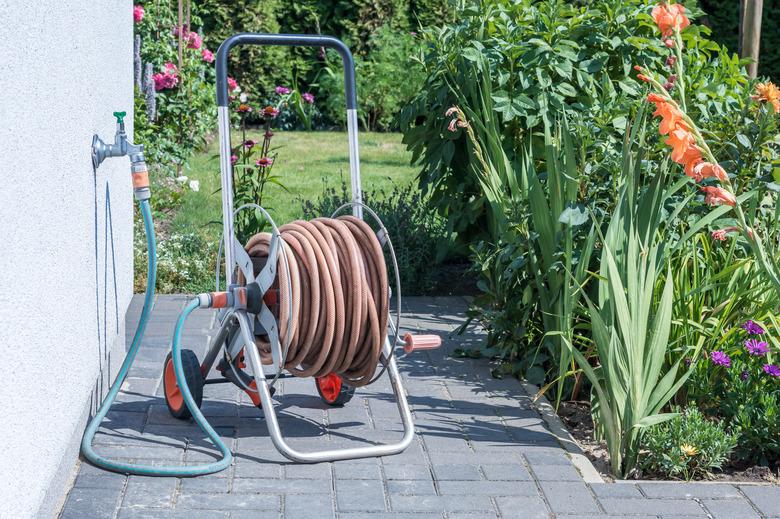How To Replace A Valve Stem On An Outside Faucet
A frustrating home issue that leads to the loss of a very valuable resource is a dripping faucet. One drip per six seconds can add up to almost 2/3 gallon per day or around $7 per month. And an outside faucet can often be overlooked. Many outdoor faucets use compression valves. You can easily fix these without having to replace the outdoor faucet once you understand the parts and how they work.
Outdoor Faucet Parts
The compression-style outdoor faucet (spigot) is pretty simple to understand. The valve has a handle that turns multiple times clockwise to turn off and counterclockwise to turn on. It's made up of a body, handle, faucet valve stem, washer, seat, bonnet, packing, and packing nut.
The body of the valve is what holds all the parts together and routes the water from the house plumbing to the hose via plumbing or hose connections. The faucet valve stem is what the handle is attached to. This is the part that spins, opening or closing itself against the seat using a rubber washer to form a watertight seal. The bonnet screws into the body and holds the mating threads to the faucet valve stem, which is sealed by the packing and compressed with the packing nut attached to the bonnet.
A leak coming from the faucet's hose connection may be a valve stem washer or valve seat. This is usually due to a crack in the washer but sometimes can be a little more than that. If the valve handle keeps turning the stem while you're trying to turn the faucet off or on, then the whole valve may need to be replaced.
How to Replace a Valve Stem Washer
1. Turn Off the Water
To avoid taking a cold shower outside, turn off the water feeding the outdoor faucet. If you can't locate the valve to shut off just that outdoor faucet, shut off the water to the whole house. Check to make sure that there's no more water pressure coming from the outdoor faucet by opening up the valve if possible.
2. Disassemble the Valve
Use two wrenches or pliers — one to loosen the bonnet and the other to steady the valve so you don't break it from the side of the house or piping behind the wall. Once loose, remove the whole assembly.
3. Replace the Washer
With the assembly in your hand, look at the bottom of the valve stem for the rubber washer and check for scoring or grooves cut into the rubber. Use a screwdriver to remove the washer from the valve stem. Locate the exact size washer to replace it, noting the stampings on the washer. With the stampings facing the cup the old washer was attached to, reinstall the new washer. Now you can reinstall the assembly by reversing the removal procedure.
4. Valve Stem Packing
As a precautionary measure, repair the packing before turning the water to the outdoor faucet on again. As mentioned before, the packing nut makes a watertight seal to the valve stem and now that you have disturbed the valve this can be a week point.
With two wrenches, one holding the bonnet and the other holding the packing nut, loosen the packing nut. Create a gap to expose the packing and wrap the faucet valve stem clockwise with Teflon packing on top of the old packing. After one good wrap with each end of the Teflon overlapping the other, reinstall the packing nut, but don't overtighten. Turn the water back on and check for leaks. If there's a leak from the packing nut, carefully tighten it until the leak stops.
Outdoor Faucet Is Still Leaking
If you find that the outdoor faucet is still leaking, you may have a scored valve seat. There's a repair tool for this called a metal faucet seat grinder, which can make light work of a scored valve seat. Shut off the water again and remove the bonnet and assembly. Follow the instructions for the tool, reassemble, and try again.
If the outdoor faucet still leaks, it may be time to replace it. And if during any of these steps you encounter pieces that are stuck or rusted, a stripped stem, or cracked valve body, replacing the outdoor faucet will be necessary.
